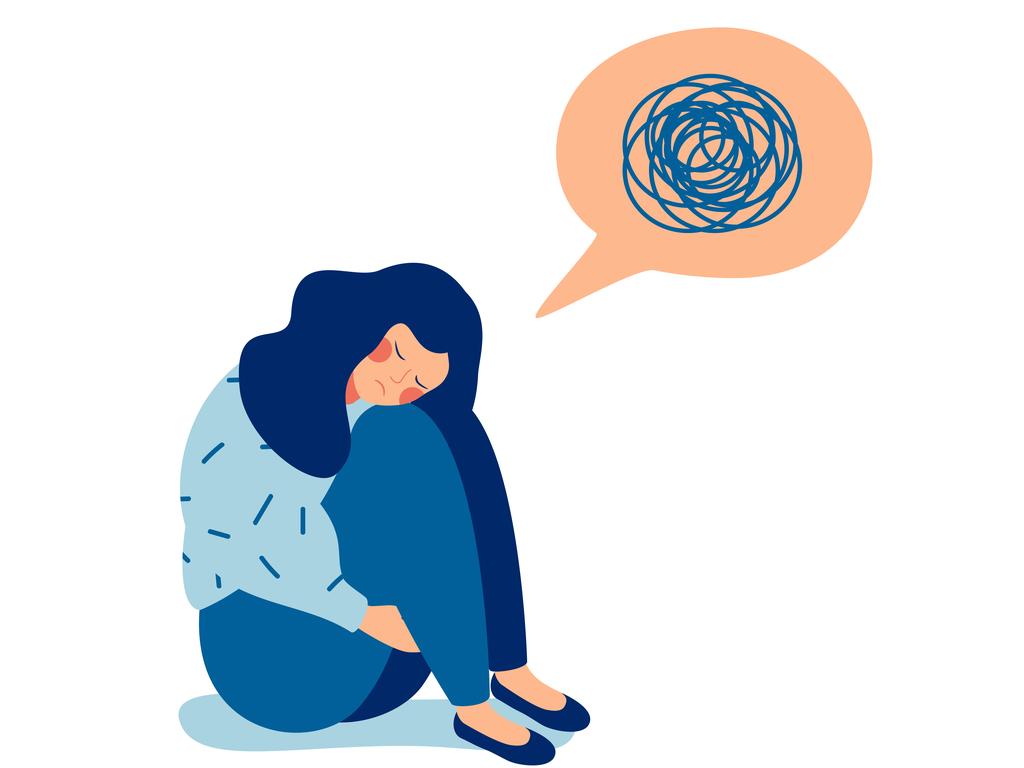Working from home? You’ve just had a pay rise
While the young and poor see opportunities slide, professionals are reaping a bonanza with WFH. Here’s why.

But it was cause to reflect on the extraordinary boon the coronavirus recession has been for at least some professional workers, not only in terms of flexibility but also in pay. WFH is the defining economic shift of 2020. Often a source of amusement — #WFH is a social media phenomenon — the trend has enormous implications for inequality.

Australian Harvard economist James Stratton believes about 40 per cent of our workforce can feasibly work from home, but overwhelmingly in professional and higher-paid sectors.
If that’s true, more people are now working from home than in the office.
“Almost twice as many (US) employees are working from home as at work,” Stanford economist Nicholas Bloom noted late last month.
WFH leaves unresolved and uncomfortable questions about employers’ rights to monitor the movements of their staff. Is it right to go for a surf in the afternoon, on work time, even if you’re finished your project?
If you hurt yourself at home while working, whose insurance is relevant?
WFH seriously frays the distinction between sick, annual and personal leave, and work time, for instance. You might be too sick to travel to the office but not too sick to attend a Zoom meeting or tap out some analysis at the computer, where even COVID-19 is of no threat to other callers.
83 million Americans are currently working from home.
— Christopher Mims (@mims) July 25, 2020
That’s down from an early May peak of 110 million, but it’s holding steady.
Tens of millions of them have said they never want to go back to the office full time; 82% of their bosses say that’s fine.https://t.co/aPXjDTSKzK
The bottom line is many professional service workers, at least relatively efficient ones, have received a significant one-off increase in their hourly rate of pay, probably better than any promotion they could have hoped for.
If even one hour of their pre-pandemic day was spent on commuting and time-wasting activities in the office that they would not otherwise perform, they have enjoyed a 14 per cent pay rise. If that adds up to two hours a day, it’s 33 per cent pay rise. Wage growth is supposed to fall in recessions, or at least slow, not surge for a sizeable chunk of the workforce.
At the same time, WFH workers’ incidental expenses — travel, dry cleaning, suits (or at least trousers, for those on plenty of remote meetings) — probably have fallen.
And inflation across the year to June just past is expected to be negative for the first time since the 1960s, implying one of the biggest increases in real wages on record for those (mainly public servants) who have enjoyed any nominal pay increase.
To the extent WFH has lifted the de facto hourly wage of professionals, WFH puts downward pressure on wages.
Wow. Google is telling its employees that they'll be working from home until the summer of 2021. My guess is 1) Their models suggest COVID is not going away 2) WFH is going reasonably well there. https://t.co/omUSHogEiJ
— nxthompson (@nxthompson) July 27, 2020
Employers ultimately will realise they can offer lower overall salary packages to new workers because they can no longer monitor their activity. The contract isn’t the same when you’re at home.
Undoubtedly, and for a range of reasons, some WFH workers would prefer to be in the office, but that’s hard to prove to the boss.
WFH resets the playing field too, obviously disadvantaging the charismatic and personable. Only output, not charm, will impress the boss under a WFH regime.
It’s not all sunlit uplands for white-collar professionals, at least those in the private sector.
Reserve Bank governor Philip Lowe noted in a speech last week that the pipeline of work for professional service firms was drying up. “If it is not replaced soon, hours worked in these businesses will decline further, just at the same time that other parts of the economy are coming back to life,” he said.
Overall, though, the coronavirus recession will supercharge inequality. Once JobKeeper is withdrawn, almost everything about this recession will be economically regressive.
The global financial crisis at least temporarily hit the incomes of high-earning finance types. This time they are cosied up at home — and probably on much higher hourly pay.
How can a workaholic survive working from home? https://t.co/jE8saZW1bx
— The Australian (@australian) May 3, 2020
The well-off overwhelmingly own the nation’s property and shares, and central banks are doing their best, and so far have succeeded, in keeping their price high. And only those with secure, well-paying jobs are able to avail themselves of the ultra-low borrowing rates.
Meanwhile, youth unemployment has risen to the highest level in a generation, about 16.4 per cent for June according to the Australian Bureau of Statistics, and the effect on incomes and opportunity will linger for years to come.
Once JobKeeper is withdrawn it may well be much higher, especially given only those looking for jobs are counted. It’ll be hard to have a go, let alone get one.
The Productivity Commission found workers aged between 20 and 34 who graduated just as the GFC hit experienced almost zero growth in real wage rates from 2008 to 2018. In addition, those aged 15 to 24 experienced a large decline in full-time work and saw an increase in part-time work.
New Treasury analysis released on Monday that examined outcomes for graduates from 1990 to 2017 has found Australians who graduate in a job market with high unemployment can expect to earn about 8 per cent less in their first year of work and 3.5 per cent less after five years.
With each of us facing the prospect of working from home for a lot longer, there are thankfully new tools on the way to help. https://t.co/d2mdHdkRCd
— The Australian (@australian) June 29, 2020
And the impact seems to be getting worse. “Scarring effects are more prominent and permanent for individuals who graduated after 2000,” says the research, undertaken by Treasury economist Dan Andrews and others.
Remarkably, millennials graduating during the GFC had worse employment outcomes even than their Generation X seniors, who graduated in the much more severe, in aggregate at least, early 1990s recession.
And it’s likely it will be so for young people this time.
The global economy shrank 0.1 per cent during the GFC. This time it’s expected to fall 6 per cent, or 60 times as much, Josh Frydenberg pointed out last week.
The WFH workforce, which has underpinned coronavirus hysteria and the draconian response — at least by any historical standard — might use some its enhanced leisure time to understand that it is the poor, not the wealthy, who will suffer most from this recession.






I was on Sydney Harbour a few weeks back to celebrate my birthday, on a weekday, and was a little surprised to learn, as I enjoyed a few beers in the late afternoon, that my nautical friend was “working from home”. I had taken the day off work.